Contents
General information
- Comarch mPOS is a mobile application supporting processes handled in the shop. The employee can conduct sales activities using a smartphone, tablet, or portable collector. The application is directed to both sellers and back office employees who handle delivery receipts and releases and the movements of items between the backroom and the sales room.
- Comarch POS Agent service provides up-to-date information on stock levels on each workstation while issuing documents. This information is presented taking into account individual warehouses. All processes in the warehouse can be carried out without connection to the headquarters, so using this service provides full autonomy to the shop by ensuring that the stock levels are always up to date.
- Synchronization service – with this synchronization service, synchronization between the ERP system and Comarch POS application is possible. The service’s name and port is defined in the ERP system. If the service is missing, it is not possible to work with Comarch POS application.
Requirements
Comarch mPOS requirements:
- Android system version: 9.0
- RAM: 4 GB (or more)
- Internal memory: 16 GB (or more)
A device with a built-in barcode scanner will streamline the use of the application.
Recommended devices:
- Zebra TC52
- Zebra TC57
- Honeywell CT40
- Honeywell CT60
- Unitech PA760
Installation
Comarch mPOS and Comarch POS Agent can be installed using Comarch ERP Auto Update tool.
Installation and configuration of Comarch POS Agent service
After running Comarch ERP Auto Update, it is necessary to perform the following actions:
- Add the Comarch Retail product on the Configuration tab
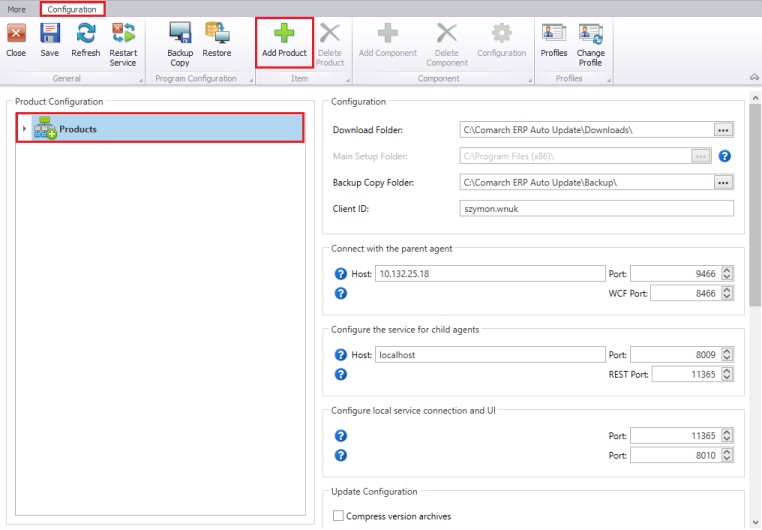
- Add the Comarch POS Agent component to the Comarch Retail product
- Configure the Comarch POS Agent component. The configuration window is opened by selecting a component and choosing the [Configuration] button from the menu. In the configuration window, it is necessary to enter data needed to establish connection with a Microsoft SQL Server Management Studio server where the POS Agent database will be installed.
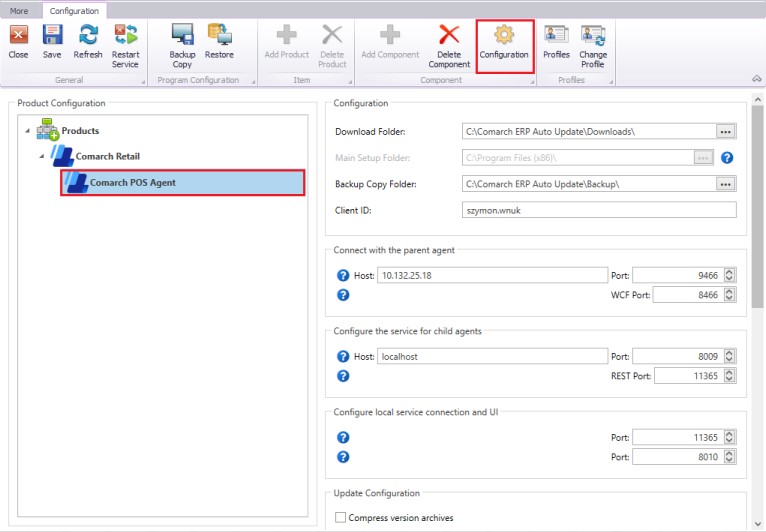
- Server Name – the name and instance of the server where the database is to be created
- Database Name – by default, the name POSAgent_[profile_code] is suggested
- Login Data – an SQL user login and password
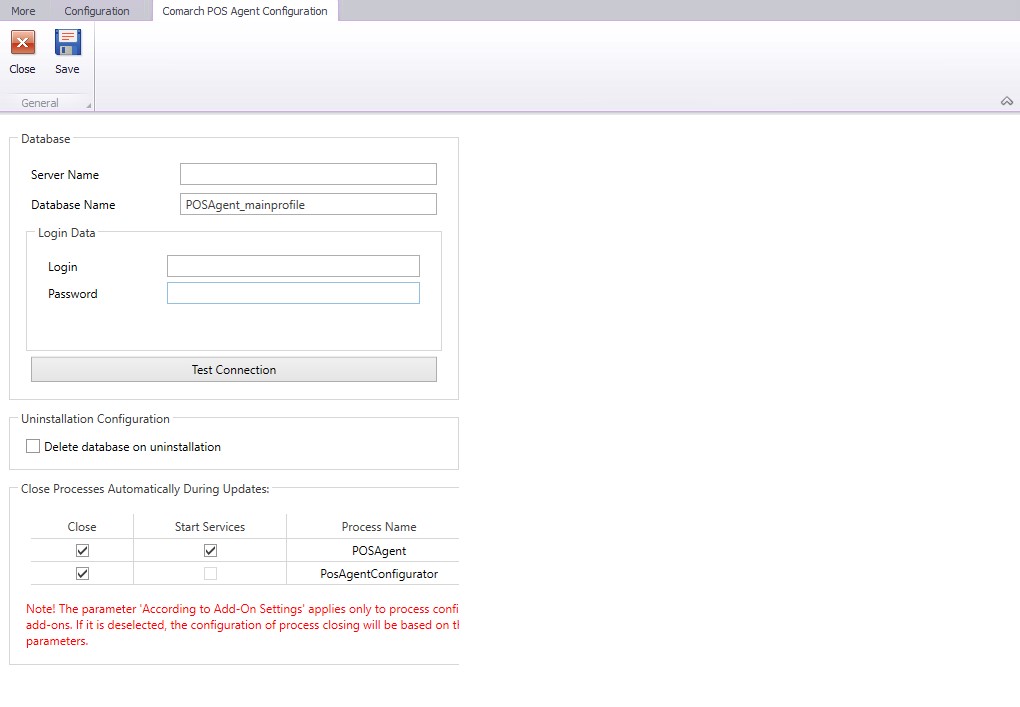
The [Test Connection] button makes it possible to verify connection with the selected server.
- Next, close the component configuration window by selecting [Save] and [Close].
- Using the [Advanced Actions] button in the main window of Comarch ERP Auto Update, download and install a relevant version of Comarch POS Agent.

If the code of Comarch POS Agent has been defined in the ERP system, proceed to the installation folder of Comarch POS Agent and run the PosAgentConfigurator.exe application.
- After the user selects an application language, the application loads relevant parameters
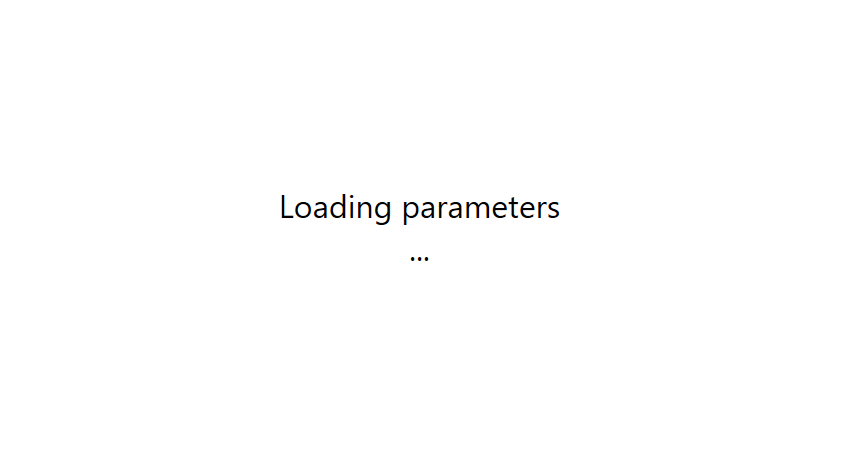
- Once the parameters are loaded, the configuration tool’s window opens

- Fill in the following fields in the application:
- POS Agent Service IP Address – the IP address of the computer where the service has been installed (the Comarch POS Agent service requires a fixed IP of the computer where it has been installed)
- POS Agent Service Port – the port entered in the ERP system
- OMS Server Address – the default address is http://localhost:8099/DataService/
- POS Agent Code – the POS Agent code entered in the ERP system
- POS Agent GUID – this value is assigned automatically
- The service is installed by selecting the [Install] button

- The correctness of entered data can be verified in advance by selecting [Verify]. In turn, the [Register] button is used to register the Comarch POS Agent service.
- In order to verify if the process has been completed successfully, open the Comarch Retail POS Agent application in Comarch ERP Enterprise system and check whether entries in the Host, Port, and GUID fields are updated.
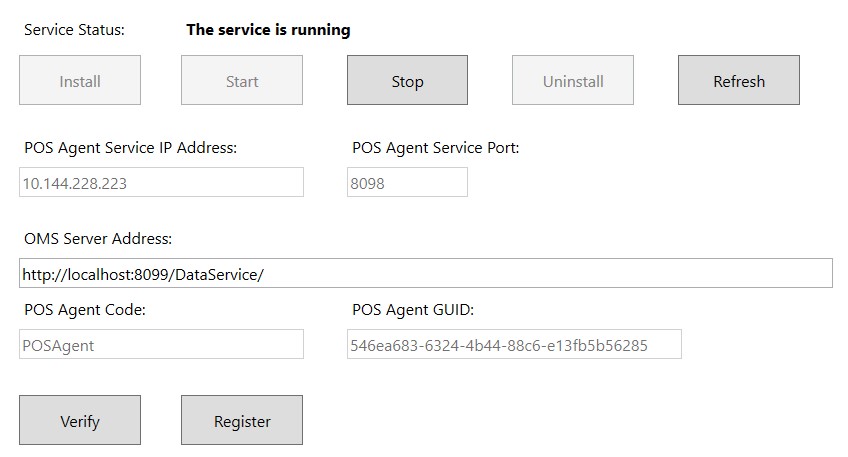
Installation and configuration of Comarch mPOS
In order to complete the first installation of Comarch mPOS application, it is necessary to:
- Add the Comarch Retail product for the parent agent of Comarch ERP Auto Update
- Add the Comarch mPOS component

- Using the [Advanced Actions] button in the main window of Comarch ERP Auto Update, download and install a relevant version of Comarch mPOS

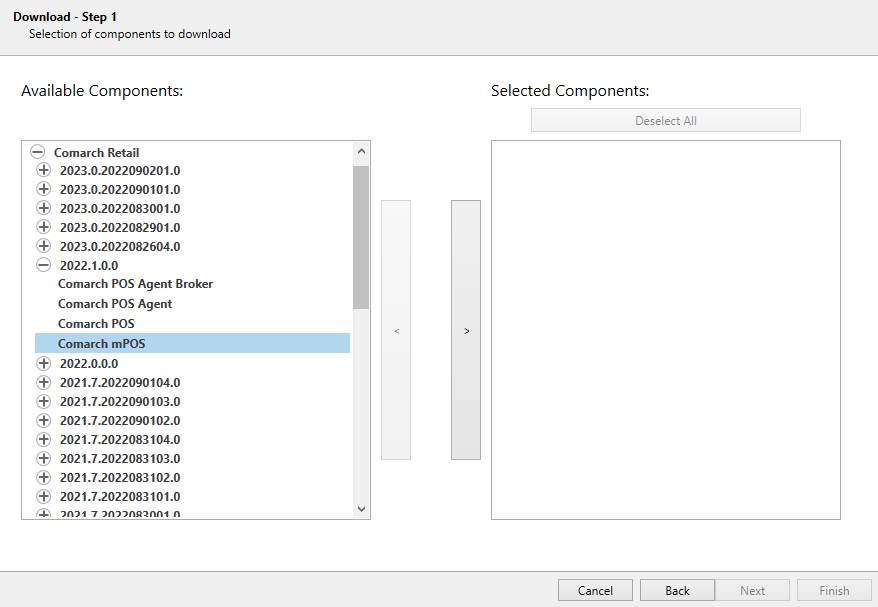
- After downloading the component, find the zip file in C:\Comarch ERP Auto Update\Downloads\Comarch Retail\[profile_name]\[version_number]\Comarch Retail mPOS
- Extract the zip file
The extracted package contains a file with the APK extension. Transfer it to an appropriate mobile device, e.g. using a USB cable. Through a relevant application on the device (e.g. a file explorer), open the transferred APK file.
If the application through which the user opens the installation file has no permissions to install applications from unknown sources, a notification about the missing permission is displayed. The message will contain the [Settings] button that proceeds to the relevant place in the system settings. Allow the installation from that source.
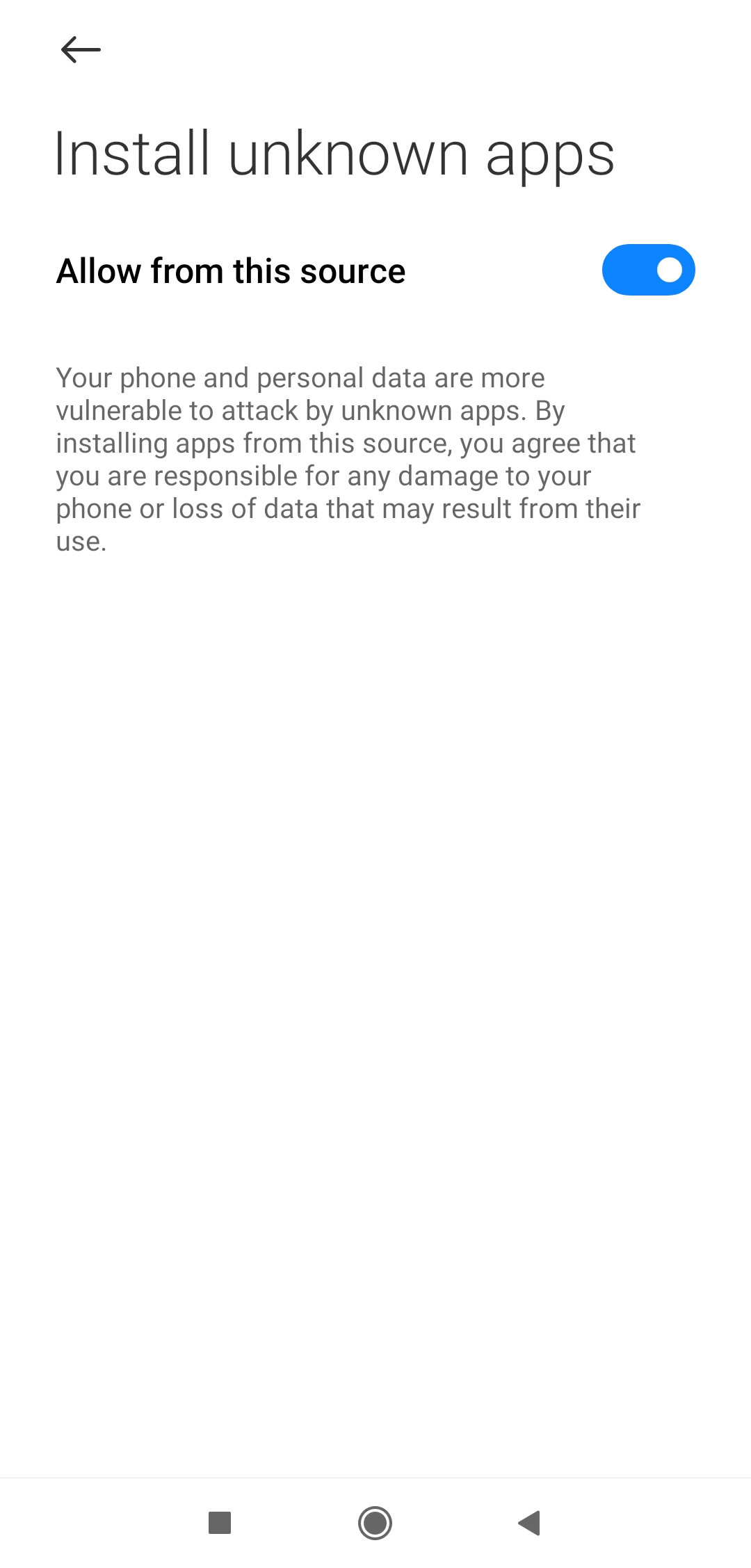
After Comarch mPOS is installed, such consent can be undone in the system settings.
After the installation, the application will become available in the list of all applications.
Product licenses
Following the development of Comarch mPOS application and the introduction of new and diverse modules, a division into separate license types has been made, depending on the ERP system:
- mPOS (Standard, Enterprise);
- Front Office
- Back Office
- Front Office + Back Office
During each application launch, license types are verified automatically. The visibility of individual functional modules in the mPOS system depends on these types. In the ERP system, you need to specify whether a given workstation corresponds to Comarch mPOS and which licenses will be supported within the application. The license will be checked during each start of the application; in the offline mode, the last correctly used license will be used.
The type of license specified for the workstation determines the availability of functions for each application module:
- Back Office (warehouse processes)
- Front Office (sales processes)
If an incorrect product license is set in the ERP system, you will see an alert message displayed in Comarch mPOS.

